The AMD Ryzen 3 3300X and 3100 CPU Review: A Budget Gaming Bonanza
by Dr. Ian Cutress on May 7, 2020 9:00 AM EST*We are currently in the middle of revisiting our CPU gaming benchmarks, but the new suite was not ready in time for this review. We plan to add in some new games (Borderland 3, Gears Tactics) and also upgrade our gaming GPU to a RTX 2080 Ti.
Gaming: Ashes Classic (DX12)
Seen as the holy child of DirectX12, Ashes of the Singularity (AoTS, or just Ashes) has been the first title to actively go explore as many of the DirectX12 features as it possibly can. Stardock, the developer behind the Nitrous engine which powers the game, has ensured that the real-time strategy title takes advantage of multiple cores and multiple graphics cards, in as many configurations as possible.
As a real-time strategy title, Ashes is all about responsiveness during both wide open shots but also concentrated battles. With DirectX12 at the helm, the ability to implement more draw calls per second allows the engine to work with substantial unit depth and effects that other RTS titles had to rely on combined draw calls to achieve, making some combined unit structures ultimately very rigid.
Stardock clearly understand the importance of an in-game benchmark, ensuring that such a tool was available and capable from day one, especially with all the additional DX12 features used and being able to characterize how they affected the title for the developer was important. The in-game benchmark performs a four minute fixed seed battle environment with a variety of shots, and outputs a vast amount of data to analyze.
For our benchmark, we run Ashes Classic: an older version of the game before the Escalation update. The reason for this is that this is easier to automate, without a splash screen, but still has a strong visual fidelity to test.
Ashes has dropdown options for MSAA, Light Quality, Object Quality, Shading Samples, Shadow Quality, Textures, and separate options for the terrain. There are several presents, from Very Low to Extreme: we run our benchmarks at the above settings, and take the frame-time output for our average and percentile numbers.
All of our benchmark results can also be found in our benchmark engine, Bench.
| AnandTech | IGP | Low | Medium | High |
| Average FPS | 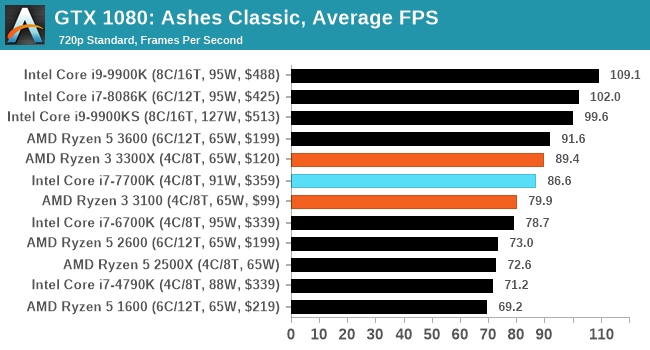 |
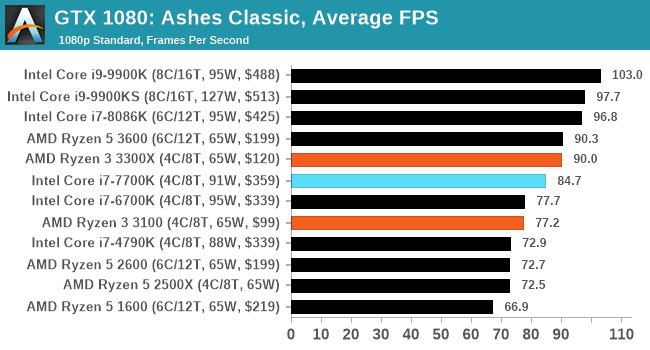 |
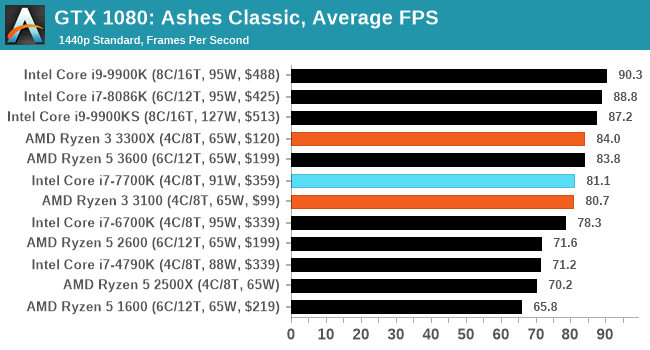 |
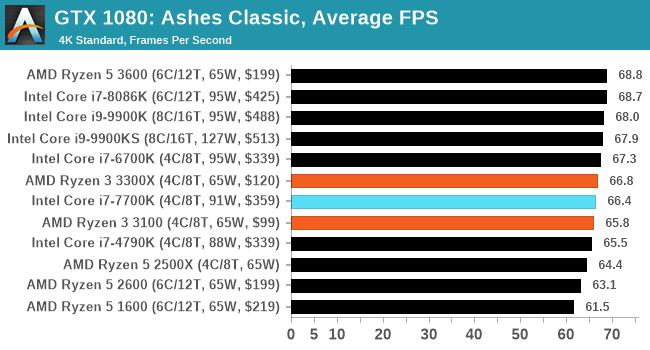 |
| 95th Percentile |  |
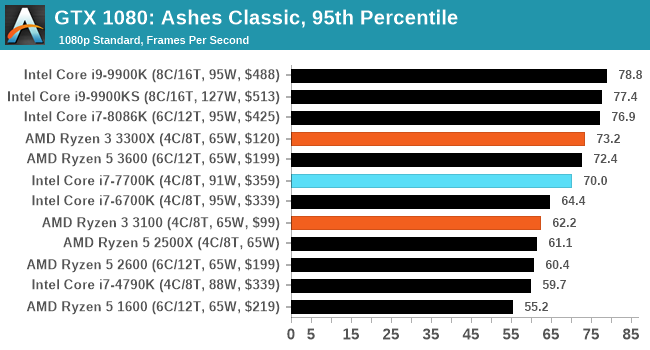 |
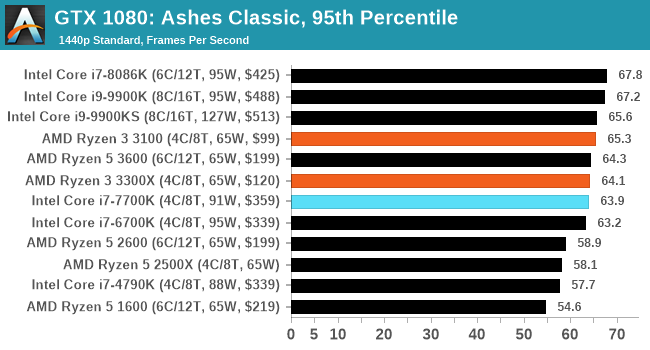 |
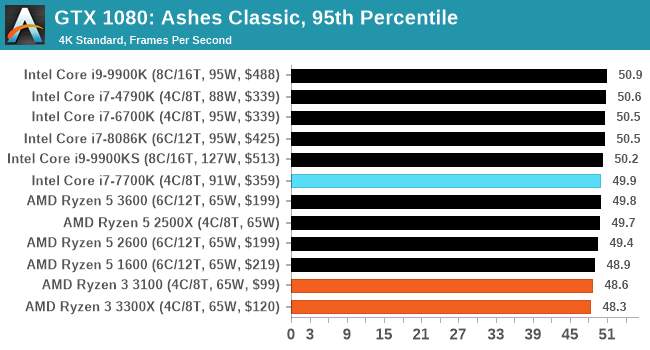 |


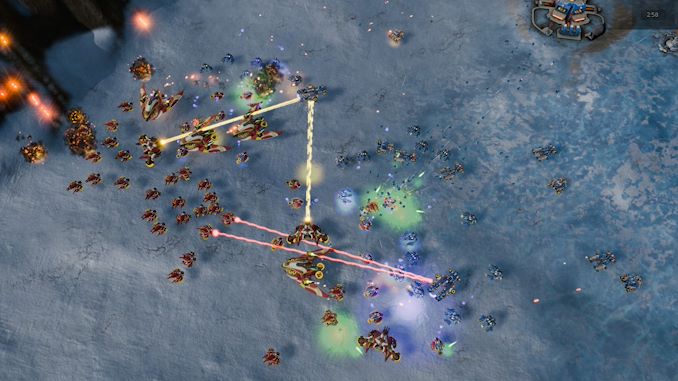









249 Comments
View All Comments
psychobriggsy - Thursday, May 7, 2020 - link
They'll be based off on Renoir. So 8 cores, 16 threads, with 8MB L3.In mobile, Renoir's GPU has outperformed the predecessor, despite having fewer CUs, because of improved clocks. I'd say it's likely desktop Renoir will outperform the predecessor in graphics at the same price point, but not dramatically.
Namisecond - Thursday, May 7, 2020 - link
So, if we go by mobile Renoir, a max of 8 CU graphics?lightningz71 - Friday, May 8, 2020 - link
Yes, but, it was trivially easy to run the 3400g gpu at 1600mhz and run the ram at 3400/3600 speeds. Assuming that the gpu of the “4400” apu gets 8CUs at about 2000 MHz, it will have less total processing power. Assuming that it can’t typically run the ram much faster than 4000 speeds, it won’t have much extra bandwidth. My best guesstimate is that it performs marginally better than the 3400 in gpu limited tasks purely for having better ram support and less processor memory contention due to the larger L3. However, games are rarely entirely gpu limited and having the much improved zen 2 cores will make things markedly better.I base a lot of that on the benchmarks of the 3500u vs the 4500u, which are very roughly comparable in resources. The 4500u is consistently faster, though not by much.
Spunjji - Monday, May 11, 2020 - link
I'm expecting much the same as what you outlined here. A significant improvement over the 3400G in CPU performance and gaming for stock configurations, but with limited gains over overclocked systems.Koenig168 - Thursday, May 7, 2020 - link
Hmmm ... the 3300X is doing better than I thought it would. Would appreciate some benchmarks with games that benefit from more cores/threads. Great article. I find the part about the difference between 3100 and 3300X particularly interesting (I had wondered about the difference between the two CPUs to warrant the price difference).EdgeOfDetroit - Thursday, May 7, 2020 - link
Do those games actually exist?eastcoast_pete - Friday, May 8, 2020 - link
The 3300 is a fully functional 4 cores on one die, the 3100 is 2 cores on two (otherwise defective) die. Thus, the 3100 needs to use the interconnect a lot, which slows it down a bit.extide - Saturday, May 9, 2020 - link
No, it's still a single die, just spread across both CCX in that die instead of just one.extide - Saturday, May 9, 2020 - link
(But otherwise yes you're correct because even within a single CCD the cores must travel out to the IO die and back to get to the other CCX)Deicidium369 - Friday, May 8, 2020 - link
Suggest 3 or 4